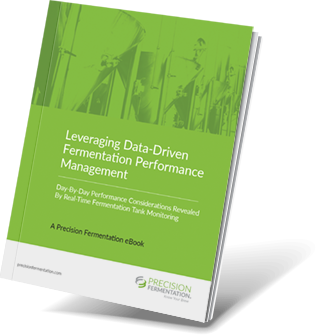Diastaticus-Infected Beer – How to Find the Wolf in Sheep’s Clothing
 Variety may be the spice of life, but sugars are certainly the fuel. This is especially true for microorganisms. Most microorganisms rely on pentose and hexose sugars to generate energy and promote their own growth. For some of these microorganisms, any sugar that is locked away in a starch or dextrin molecule is off limits, because they lack the enzymes needed to break down the larger starch and dextrins chains. Standard brewing yeast falls into this category, as it has a limited repertoire of enzymes that can break down starches and dextrins. These yeast rely on saccharification by enzymes present in brewer’s grains, activated during malting, to unlock complex sugars in the wort.
Variety may be the spice of life, but sugars are certainly the fuel. This is especially true for microorganisms. Most microorganisms rely on pentose and hexose sugars to generate energy and promote their own growth. For some of these microorganisms, any sugar that is locked away in a starch or dextrin molecule is off limits, because they lack the enzymes needed to break down the larger starch and dextrins chains. Standard brewing yeast falls into this category, as it has a limited repertoire of enzymes that can break down starches and dextrins. These yeast rely on saccharification by enzymes present in brewer’s grains, activated during malting, to unlock complex sugars in the wort.
Wild yeast species have a wide repertoire of glucoamylases (STA genes) encoded in their genomes, which can break down long chain carbohydrates in beer. Further, some domestic strains of Sacchromyces cerevisiae (called var. diastaticus or Sacchromyces diastaticus beer yeasts) – often used for fermenting Belgian and Saison styles – also contain these enzymes. These genes are expressed in a controlled manner when the yeast cells sense changes in carbohydrate levels. When easier-to-metabolize sugars such as glucose and maltose are exhausted, cells respond by expressing the STA genes, which results in the production of glucoamylase enzymes. The cells then move these enzymes to the cell surface, where they ultimately end up in the beer. Once there, these enzymes can break down any remaining starches and dextrins in the beer into smaller chain sugars that can then be consumed by any metabolically active yeast that are in the beer.
The issue with regard to the commercial brewing process is that, in a beer unintentionally infected with one of these strains, the glucoamylase enzymes will continue to metabolize dextrins. The smaller chain sugars that are then produced can be used by any remaining potential yeast to produce additional CO2 and ethanol, leading to over-attenuated beer. Using standard fermentation monitoring, the signs of an infection like this may not be evident at the time of packaging. However, we all know the potential consequences: thin or dry beer, and over-carbonation that may lead to dreaded “bottle bombs” or popped cans.
What can be done about Diastaticus?
This is an important problem, and uncovering beer contamination issues can take time. In terms of colony or cell shape, there are almost no differences between S. cerevisiae and var. diastasticus, so visual inspection is ineffective. Forced carbonation tests can determine whether “finished” beer is actually still fermenting as glucoamylases break down carbohydrates. Further, yeast can be subjected to PCR tests to determine whether STA genes are present – however, this will not necessarily indicate if they are expressed or “turned on.” Another option is to extract and test yeast samples on dextrin or starch media to determine whether the cells can express STA genes to produce glucoamylase and, therefore, would be able to use long chain carbohydrates as a fuel. Although these methods are all effective, they are often impractical due to the extra time or expense required.
At Precision Fermentation, our researchers are currently using fermentation monitoring to detect differences in beer conditions between pure cultures of S. cerevisiae and mixed diastaticus pitches, in order to understand and document the signs and characteristics of an infected beer. With continuous fermentation monitoring, our sensors can detect changes in beer that indicate metabolism of dextrins and additional fermentation. Our goal is to provide advanced notice of an unintentional Sacchromyces diastaticus infection, prevent repitching with a contaminated yeast stock, and ultimately help keep overcarbonated beer from appearing on shelves.
Questions? Ideas for further research? Add your comment below.
Free eBook: Leveraging Data-Driven Fermentation Performance Management
Can fermentation management be improved, as a process? This eBook explores, in detail, how fermentation performance data analysis helps elevate product and business outcomes in a modern brewery, whether brewpub, microbrewery or regional craft brewer.
You will learn:
- Day-by-day performance considerations – learned through the extensive examination of real-time fermentation tank data.
- Key recommendations from the Precision Fermentation science team at each major step of fermentation – “Day zero” (i.e. before you pitch your yeast), the first 24 hours, and day two through the end of fermentation.
- Best practices – Activity to watch out for, broken down by each key measurement – Dissolved oxygen, gravity, pH, pressure, internal/external temperature, and conductivity.
- Key findings that can help you solve problems and improve your results.



Any cleaning recommendations for homebrewers to get rid of a Diastaticus infection?
Thanks for the question. Really, the best way to combat Diastaticus is a clean operation. Fortunately, besides producing extra enzymes, Diastaticus strains are mostly like regular Ale yeast. They tend to be slightly more heat-tolerant, but for the purposes of cleaning, that shouldn’t affect anything. This means they are just as susceptible to a correctly diluted sanitizer as all of the other microbes out there.
For the homebrewer, that will mean keeping your fermenter and the rest of your equipment sanitized, and sanitized well. Try using a sanitizing solution filled completely to the top of your fermenter, rather than cutting any corners with volume. Also, watch your packaging materials! Whether you keg or bottle, make sure that your vessels, tools, and transfer tubing are completely sanitized. Making a few extra liters or gallons of sanitizer is generally worth it. There are homebrewers in the community around our HQ that like to separate their Saison brews from their other ales and lagers, this overabundance of caution gives them peace of mind and maybe helps them from accidentally driving a beer far past their intended attenuation. Happy homebrewing!